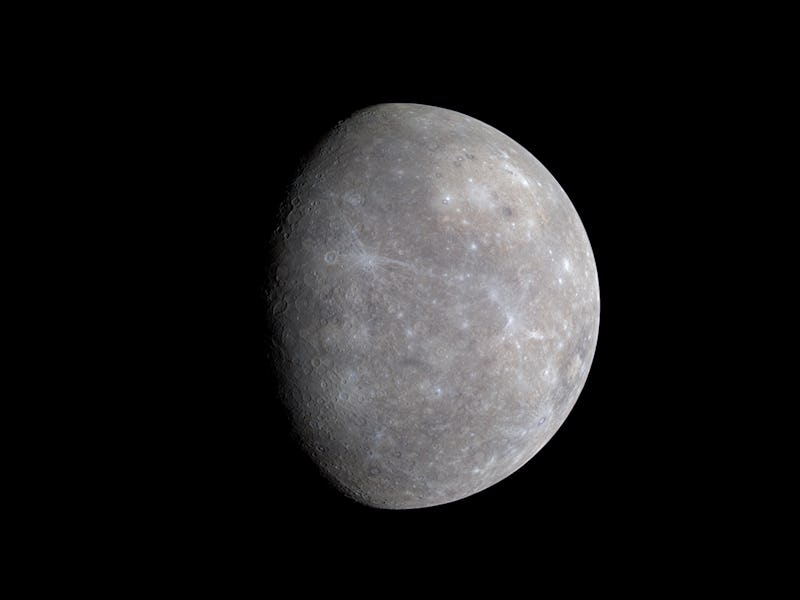You need to see this elusive planet in the sky before it "disappears" this week
The planet will reach its greatest elongation and become visible in the sky after sundown.

Celestial objects come and go from our view in the night sky, as they fling by or orbit around the Sun. Whether it be the full moon or a meteor shower or just the best night to see Mars, we're here to direct your eyes skyward and tell you to look up and appreciate the wonders of space from Earth.
This week, we're asking you to marvel at the beauty of the planet Mercury as it reaches its longest elongation on Thursday, June 4 shortly after sunset, and will be visible to Earthly onlookers in the skies.
Out of all the planets in the solar system, Mercury is the most elusive. Since Mercury is the closest planet to the Sun, it is quite difficult to spot with the naked eye with the light of the star obscuring our view from Earth.
However, Mercury is at its highest visibility when its at its greatest elongation, or its furthest separation from the Sun.
The impact crater Hokusai, located on Mercury at a latitude of 58°N.
Mercury swings from the east to the west of the Sun three times a year, and the greatest elongation of the planet takes place 22 days before and after Mercury and Earth are on the same side of the Sun. On June 4, it will be at its maximum angular distance, 24 degrees east of the Sun, according to EarthSky.
The planet will be midway between two stars, Capella and Procyon. The pair are known for their brightness that make up the 'Winter Circle,' a circular pattern of bright stars on the dark dome of the sky.
During its greatest elongation, Mercury will be as bright as the two stars on either of its side.
All three will be visible in the sky right after sundown if you look towards the west. Mercury can be seen with the naked eye, but a pair of binoculars might also be handy if you want to catch the planet glimmer in the twilight.
If you live in a crowded city like New York, it is best to get as high up as possible in order to minimize light pollution therefore going on a balcony or rooftop is highly recommended.
You also want to block out any light coming from screens of electronic devices, or flashlights and allow your eyes to get accustomed to the darkness for around 30 minutes before you look up.
After it peaks with its greatest elongation, Mercury will continue to dim each day. By June 10, the planet will be half as bright as it is today.
Mercury was at its maximum elongation from the Sun on March 24, where it was 27.8 degrees west of the Sun. That's the furthest away from the Sun for the year 2020, and the planet was visible during the morning sky before sunrise.
On July 22, Mercury will be at another greatest elongation where the planet will be 20.1 degrees west of the Sun.
Mercury is an underrated planet, but it has lots of wonders within its burning hot world.
Here is some more information about the innermost planet of the solar system.
- In one of the solar system's unlikeliest places, scientists find signs of life
- Why scientists are stoked on Mercury's tectonic activity
- How to watch satellite BepiColombo on its way to Mercury
- In one of the solar system's hottest places, scientists figure out how ice formed
- Monday's rare transit of Mercury will be the last for at least 13 years
The Romans named the planet Mercury after the messenger for their gods, who had wings on his helmet and shoes and would travel quickly from place to place, the same way Mercury orbits quickly around the Sun.